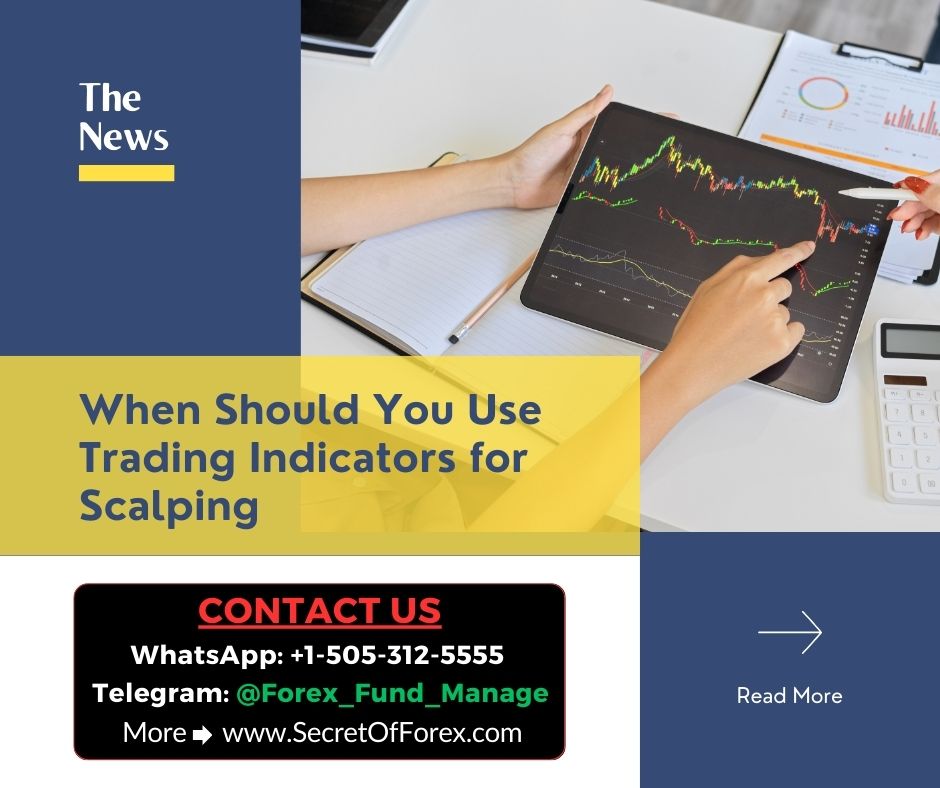Blog
When Should You Use Trading Indicators for Scalping
Scalping is a high-speed trading practice that involves entering and quitting deals in minutes to generate a large number of tiny gains. Because of the fast pace of this technique, traders often depend on technical indicators to make quick and educated judgments. However, employing indicators without knowing when and how to use them might result in bad outcomes. Knowing when to employ trade indicators for scalping is critical for enhancing accuracy, lowering losses, and increasing overall efficiency. When Should You Use Trading Indicators for Scalping
Download Now Non-Repaint Indicator
Telegram Channel Visit Now
Fund Management Services Visit Now
What are Trading Indicators – When Should You Use Trading Indicators for Scalping
Trading indicators are mathematical computations based on price, volume, or open interest that are shown on a chart to anticipate future market moves. Indicators are mostly used in scalping to:
- Identifying short-term trends * Confirming entry and exit points * Assessing market momentum * Measuring volatility.
Moving Average (MA), Relative Strength Index (RSI), Bollinger Bands, Stochastic Oscillator, MACD, and Supertrend are some of the most prominent scalping indicators.
The Role of Timing in Scalping
Scalping relies on timing and precision. Because transactions last just a few seconds or minutes, employing indicators at the wrong time or under the incorrect circumstances might result in rapid losses. As a result, the timing of indication use is just as important as the choice of indicators.
Here are the best settings and scenarios to employ trading indicators in scalping:
1. In High Liquidity Trading Sessions
Scalping needs enough market activity to benefit from minor price variations. Scalping trading indicators are most effective during high liquidity market sessions, which include:
- London Session (8 AM to 4 PM GMT) * New York Session (1 PM to 9 PM GMT) * London-New York Overlap (1 PM to 4 PM GMT)
During these periods, trade volume is high, spreads are tighter, and indicators provide more accurate signals owing to higher price activity.
2 In Trending Markets
Trend indicators like as the Exponential Moving Average (EMA), Supertrend, and MACD are more useful when the market is moving. Trying to employ trend indicators in turbulent or sideways markets might provide erroneous signals.
- Use Indicators: When prices regularly create higher highs and higher lows (uptrend), or lower highs and lower lows (downtrend).
- Avoid Using Trend Indicators: In low-volume, ranging marketplaces, prices move within a narrow range.
3. After Confirmation of Price Action
Indicators should never be used alone. The optimal moment to use an indicator is after seeing confirming price action. For example:
- A Stochastic Oscillator indicating oversold levels becomes more trustworthy when a bullish reversal candlestick pattern (such as a hammer) develops.
- A Bollinger Band breakout is more reliable when accompanied by a powerful breakout candle that closes beyond the band.
Using indicators in conjunction with real-time market movement provides more depth and clarity to your trades.
4. Consolidation for Breakout Scalping – When Should You Use Trading Indicators for Scalping
Bollinger Bands and the Average True Range (ATR) are useful during consolidation periods, particularly when planning breakouts.
Use indications: When the market is trading in a narrow range and indications suggest decreased volatility (Bollinger Band squeeze).
- Benefit: Allows you to forecast a breakthrough and make trades at a reduced risk.
5. For Lower Timeframes (M1, M5, M15)
Scalping is typically done in short intervals. Indicators like RSI, Stochastic, and Supertrend are helpful when used over short intervals.
Use RSI or Stochastic to identify overbought or oversold levels on M5 or M15 charts.
Use EMA Crossovers to validate trend direction on M1 or M5 charts.
Using indicators on shorter timeframes results in quicker signal creation, which is ideal for short-term scalping trading.
6. With a Defined Strategy
Indicators perform best when utilized in conjunction with a structured trading plan rather than as a result of random guessing.
- Use Indicators: To adhere to predetermined guidelines, such as “Buy when the 9 EMA crosses above the 21 EMA and the RSI is above 50.”
Do Not Use Indicators: If you’re not clear how they fit into your entrance and exit criteria.
Having a defined methodology eliminates emotive choices and makes your scalping process more consistent.
7. Manage Risk and Position Size – When Should You Use Trading Indicators for Scalping
ATR indicators may assist select proper stop-loss and take-profit levels depending on volatility. This is particularly important when markets are moving quickly.
- Use ATR to define dynamic risk levels depending on current market circumstances.
This allows you to avoid setting stops that are either too tight (producing early exits) or too broad (resulting in excessive losses).
Download Now Non-Repaint Indicator
Telegram Channel Visit Now
Fund Management Services Visit Now
Conclusion:
The effectiveness of any scalping method is heavily dependent on when and how you employ trade indicators. They perform best when markets are liquid, moving, or consolidating in a predictable fashion. Indicators should only be used in conjunction with price movement in a systematic trading strategy. Well-timed use of indicators, whether for confirming entry, detecting breakouts, or risk management, may considerably improve scalping success. Finally, the disciplined use of indicators at the proper moment distinguishes good scalpers from inconsistent traders.
Read also this
Why Do Beginners Need Forex Indicators
When Should You Use Trading Indicators for Scalping
7 Best Trading Indicators for Successful Scalping
How to Choose the Best Trading Indicator for Scalping Success
How to Analyze Forex Trading System Performance
How Does the Non-Repaint Scalper Indicator Work
What Is a Non-Repaint Indicator in Forex Trading
When Should You Use Binary Indicators on MT4

